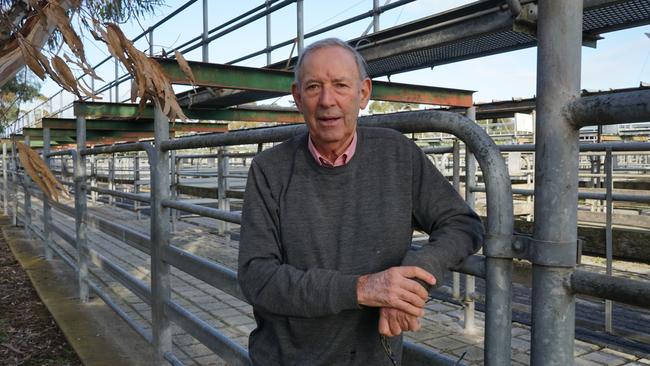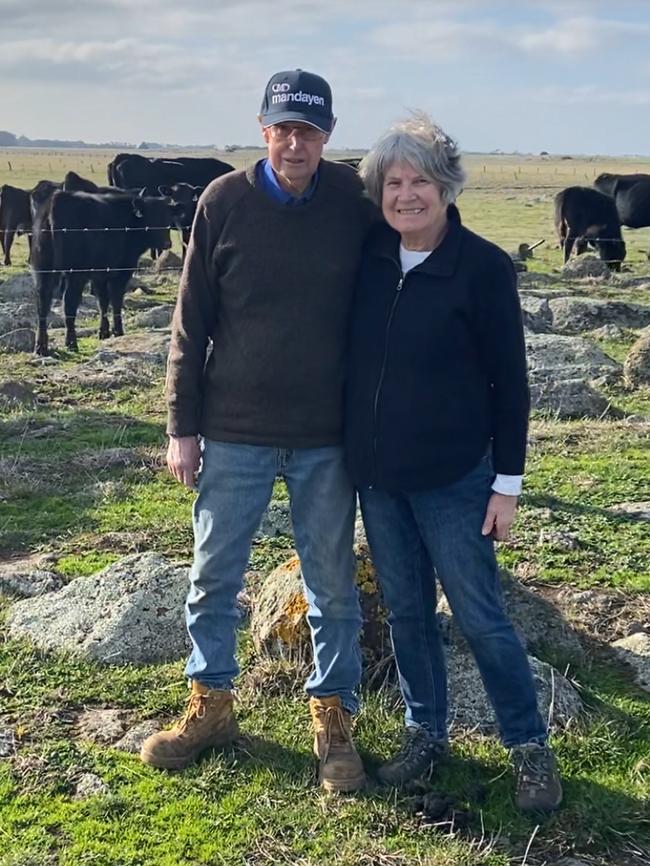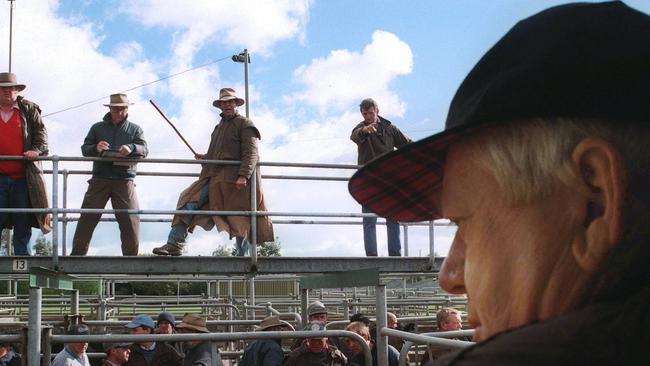Camperdown saleyards closure: Farmers reflect on 50-year legacy
Camperdown’s saleyard dates back to the end of the Bolte era. Now the town is farewelling a longstanding fixture on its northern entrance.
Camperdown is famous for its stand-alone clock tower, its tree-lined avenues and its impressive racecourse grandstand.
But while the clock tower still marks time on the hour and the horse racing landmark has been restored to its Edwardian glory, another — less glamorous but integral — part of the southwest Victorian town has been consigned to the history books.
Farmers far and wide said goodbye to a good buy in Camperdown last month, the end of a five decade-long tradition of trade.
To Elders Camperdown livestock agent Allan Hickey, who auctioned at the first sale, the town’s livestock exchange was “the first of the new age”.
“This was the first of the real ‘modern’ saleyards,” he said.
Mr Hickey said he believed the “trendsetting” saleyards helped inspire the nearby facilities to upgrade.

The town’s nearby selling competitor, Colac, had a facility nearing 80-years old.
It then opened the newer facility on the town’s outskirts in 1979, just six years after Camperdown.
“Terang also had a market in town, Warrnambool had a market right in town, but Camperdown was the first of the new-age,” Mr Hickey said.
“The old markets were all ring-sell.
“It was the first of the new-age saleyards in the western district by far, and as time went by, became very successful.”
He said since its inception, “very little” had changed at Camperdown, except for its roofing and rubber floors.
Weerite beef producers Peter and Mary Hay manage Angus/Friesian-cross cattle with Limousin bulls, and were regular vendors at the Camperdown.
Mr Hay attended the first sale in 1973.
“It was a social hub for people, as saleyards are, farmers like to gather and chat,” he said.
“The canteen was always open, there’s a group of people that would go to the canteen and catch up with their stock agent or do business.”

Mrs Hay said she always remembered the community saying the saleyard was then-premier Henry Bolte’s gift to the region.
She said she was fond of the saleyards’ community feel, and had made plenty of friends at both Camperdown and neighbouring facilities.
An Australian Livestock Markets Association initiative into the social value of saleyards described them as “critical to the social fabric of regional communities.”
“Once upon a time when Thursday was always market day in Colac, all of the farmers would go there and park in the main street, the ladies would shop, but those times have changed,” Mrs Hay said.
Mr Hay said he believed Mortlake was the “new modern” for western Victorian farmers, and set a new standard for the region.
RLX decided to end its lease with Corangamite Shire Council after low throughput and needing significant capital investment for upgrades.
“Fifty years is a lifetime of nearly anything, as far as structural maintenance goes,” Mr Hay said.
“I couldn’t see Camperdown was going to survive, unfortunately.”
He said his fondest memories of the yards were its weekly F1 sales.
“It was a magnificent sale, they brought cattle from all over,” he said.
Mr Hay said he eventually chose to move his business to Mortlake due to more buyers.
“Farmers have got to change their ways, we’ve had to change the stockyards from wooden panels to steel panels, everything evolves,” he said.
“I’m glad I’ve lived to see (Mortlake), it’s safer for the people working there, it’s better for the livestock.”
Corangamite Shire Council, will be considering submissions before deciding its next steps for the site in the coming months.
The Camperdown operation stop came 12 months after Warrnambool City Council closed its local yards, due to a lack of financial return, and days after Pakenham’s closure.

Former Camperdown mayor Ian Judd said had seen the rise and fall of the saleyards, both as a councillor and as a businessman locally.
“You used to read in the paper that more than 1000 head being sold at any one sale. It was lucky to be 300 in recent times, so it wasn’t surprising that it would ultimately close,” Mr Judd said.
“It was a big part of the local economy for generations. The netball club even used to train there on the bitumen some days. Plus, it was a money-spinner for the council during my time in the 1980s and 90s.”
Mr Judd said the closure of Camperdown saleyards was a commonplace conundrum for councils across Australia.
“You look at Warrnambool, Ballarat, Geelong — they all had saleyards located close to the city centre and all have closed in the past 10 or 15 years. Camperdown wasn’t to that scale but there’s been some big changes in livestock sales and it’s gone by the wayside as a result.”




